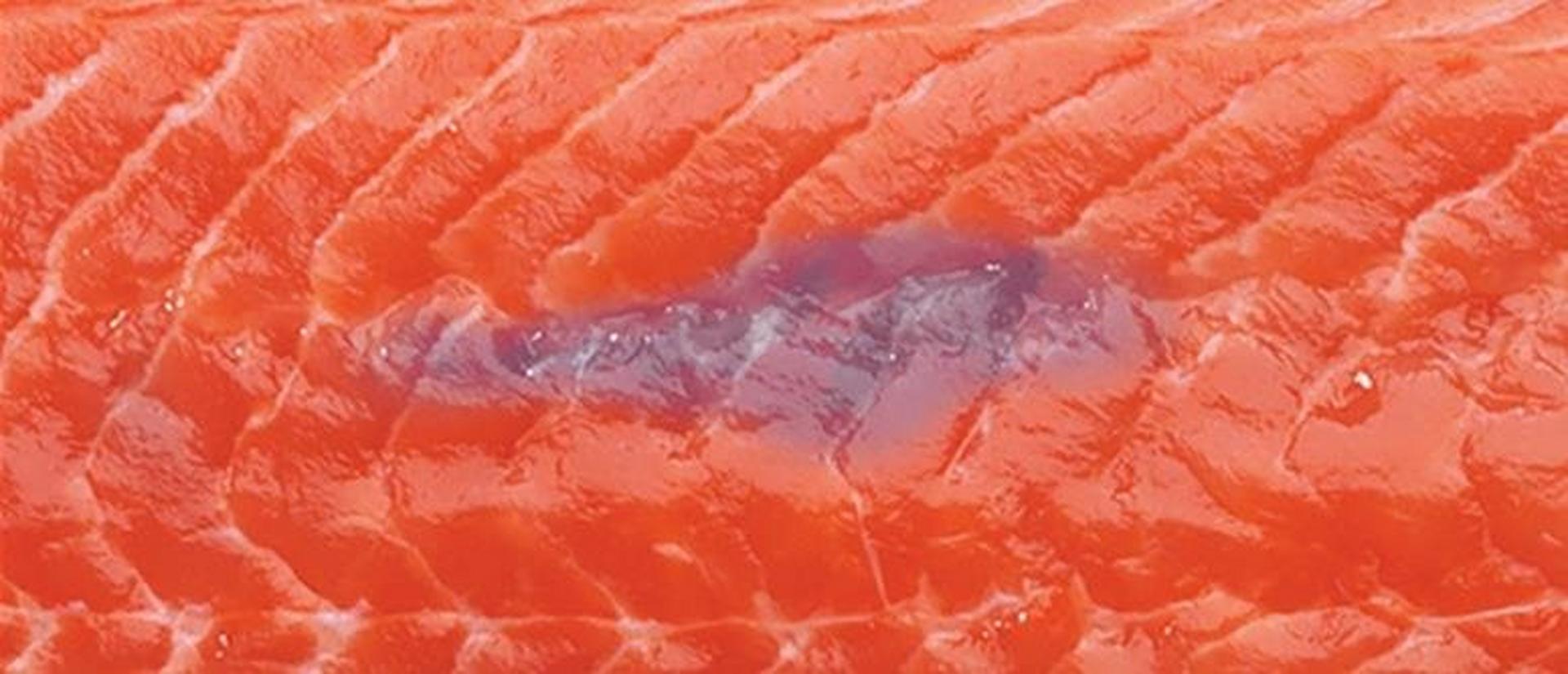Dark spots
Research has shown that the development of dark spots is closely connected with the health status of the fish, and preventive healthcare work will therefore be important in our efforts to limit the problem.
Dark spots and melanin spots in salmon meat have occurred more frequently over recent years. As dark spots in the fillet influence our perception of the quality of the product, the economic consequences associated with spots are considerable.
Dark spots is a collective term for many types of spots with varying levels of occurrence of blood and melanin. Current theory is that they start as spots of blood and that they go through a healing process with the formation of scar tissue and a gradual build-up of melanin.
Research shows that the melanin spots are the result of chronic inflammation in connection with bleeding in the muscles.
Melanin is a natural part of the immune system:
Melanin is a dark brown pigment that is produced by inflammatory cells known as melano-macrophage centres. The pigment is not harmful to eat and nor is it harmful to fish.
On the contrary, it is an antioxidant, and is the result of the natural defences of the fish against tissue damage.
Melano-macrophage centres flow into an area of infection or damage as a part of an inflammatory process to eliminate infection agents, prevent issue damage and contribute to tissue healing.
As a part of an effective immune system, these melano-macrophage centres and the pigment will be discarded after a task is completed, but if this inflammatory process is chronic, the pigment will remain in the tissue and form brown-black pigment spots.
If we can achieve a more effective suppression of inflammation and prevent the development of tissue damage, this will contribute to reducing the occurrence of spots.
Adding omega-3 fatty acids to feed, which suppress inflammation, and antioxidants that prevent tissue damage, will therefore contribute to a reduction in the occurrence of dark spots.

Significance for the industry
According to a survey carried out by Nofima, around 20% of Norwegian salmon are affected by dark spots.
As dark spots in the fillet influence our perception of the quality of the product, the economic consequences associated with spots are considerable. In the best-case scenario, spots are discovered on the slaughter line and results in downgrading of the fillets and more work to cut away the affected parts.
If the spots are discovered later on in the processing procedures, the value of the pieces that need to be removed increases, as do the adve effects for the remaining fillet. As the fish comes closer to the market, the potential repercussions also increase in the form of customer reactions and loss of respect on the market.
The fact that 20% of Norwegian fillets have dark spots means that 250,000 tonnes of salmon are at risk of being downgraded.
With a price reduction of around NOK 2/kg, this gives an estimated loss of value of around half a billion kroner.
According to a report published in 2015 on the subject of fish health, costs related to the dark spots reached this level back in 2010.
There is reason to believe that the costs today are even greater, as the occurrence of dark spots has increased further since then.
If the occurrence of melanin spots could be reduced, it would be of enormous significance for both fish farmers and the aquaculture industry as a whole.

